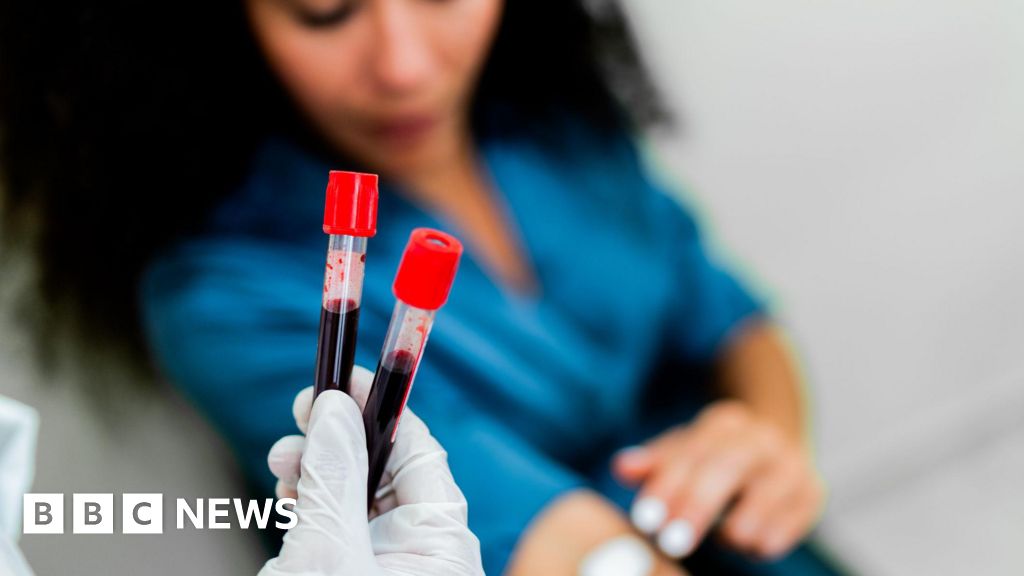Report on a Novel Multi-Cancer Early Detection Test and its Contribution to Sustainable Development Goals
Executive Summary: The Galleri Blood Test
- The Galleri test, developed by the pharmaceutical firm Grail, is a blood-based screening tool designed to detect over 50 types of cancer.
- It operates by identifying fragments of cancerous DNA that have detached from a tumour and are circulating in the bloodstream.
- A recent study in North America indicates the test could significantly expedite cancer diagnosis, aligning with global health objectives.
Alignment with SDG 3: Good Health and Well-being
The development and trial of this test directly support the United Nations Sustainable Development Goal 3, which aims to ensure healthy lives and promote well-being for all at all ages, particularly Target 3.4 concerning the reduction of premature mortality from non-communicable diseases.
- Early Stage Detection: The trial demonstrated that more than half of the cancers were detected at an early stage. Early detection is critical for improving treatment efficacy and cure rates, a cornerstone of achieving SDG 3.
- Expanded Screening Coverage: A significant finding was that three-quarters of the cancers identified were types for which no routine screening programme currently exists, such as ovarian, liver, stomach, and pancreatic cancer. This addresses a major gap in preventative healthcare.
- Increased Overall Detection: When combined with existing screening for breast, bowel, lung, and cervical cancers, the test increased the total number of cancers detected seven-fold, enhancing public health strategies to combat non-communicable diseases.
Fostering Innovation and Partnerships (SDGs 9 & 17)
- Technological Innovation (SDG 9): The Galleri test represents a significant advancement in medical technology and scientific research, aligning with SDG 9’s goal to build resilient infrastructure and foster innovation. The test’s ability to correctly identify the cancer’s origin in 90% of cases is a key technological achievement.
- Multi-Stakeholder Partnerships (SDG 17): The progress of this technology exemplifies effective partnerships for the goals. This includes collaboration between the private sector (Grail), academic research institutions (Oregon Health & Science University), and public health systems, such as the UK’s National Health Service (NHS), which is currently conducting a large-scale trial.
Trial Data and Future Outlook
- North American Trial Results:
- A trial followed 25,000 adults, with nearly 1% receiving a positive result.
- Cancer was subsequently confirmed in 62% of those positive cases.
- The test correctly ruled out cancer in over 99% of participants who tested negative.
- Need for Further Evidence: Experts note that additional data from randomised studies, with mortality as a primary endpoint, is essential to establish whether early detection via this test translates into reduced mortality rates.
- Ongoing NHS Evaluation: The results of a three-year trial involving 140,000 NHS patients are expected next year. A successful outcome could lead to an expanded rollout to a further one million people, scaling its potential impact on public health goals.
- Considerations for Implementation: Health authorities caution that further research is needed to refine the test’s application and avoid the potential overdiagnosis of cancers that may not have caused harm.
Relevant Sustainable Development Goals (SDGs)
SDG 3: Good Health and Well-being
- The article’s central theme is a new blood test for the early detection of cancer. This directly relates to SDG 3, which aims to ensure healthy lives and promote well-being. The test’s ability to “speed up diagnosis” and detect cancers “at an early stage, where they are easier to treat and potentially curable,” directly contributes to improving health outcomes and reducing mortality from major diseases.
SDG 9: Industry, Innovation, and Infrastructure
- The development of the “Galleri test” by the American pharmaceutical firm Grail is a significant technological and scientific innovation. This aligns with SDG 9’s goal of fostering innovation. The article describes a cutting-edge medical technology that could “fundamentally change” the approach to cancer screening, showcasing the role of research and industrial development in addressing global challenges.
Specific SDG Targets
Target 3.4: By 2030, reduce by one-third premature mortality from non-communicable diseases through prevention and treatment.
- Cancer is a primary non-communicable disease (NCD). The article highlights that the test’s purpose is to “shift to earlier detection, when we have the chance to use treatments that are much more effective and potentially curative.” This directly addresses the “treatment” aspect of Target 3.4. The statement by Sir Harpal Kumar that “The vast majority of people who die from cancer do so because we find their cancers too late” reinforces the test’s potential to reduce premature mortality from this NCD.
Target 3.d: Strengthen the capacity of all countries… for early warning, risk reduction and management of national and global health risks.
- The blood test is presented as a powerful tool for “early warning.” It improves the ability to detect over 50 types of cancer, three-quarters of which currently “don’t have any form of screening programme.” The NHS trial involving 140,000 patients and the potential to extend it to one million people demonstrates an effort to strengthen the capacity of a national health system to manage the risk of cancer more effectively.
Target 9.5: Enhance scientific research, upgrade the technological capabilities of industrial sectors in all countries… encouraging innovation.
- The article describes the result of extensive scientific research and development by a pharmaceutical firm. The trial itself, involving researchers from Oregon Health & Science University, and the ongoing NHS trial, are examples of enhancing scientific research to validate and implement a new technology. The Galleri test is a clear example of an upgraded technological capability aimed at solving a major health issue.
Measurable Indicators
Indicator for Target 3.4 (Implied): Cancer Mortality Rate
- The article explicitly points to mortality as the ultimate measure of the test’s success. Professor Clare Turnbull is quoted stating that “Data from randomised studies, with mortality as an endpoint, will be absolutely essential to establish whether seemingly earlier-stage detection by Galleri translates into benefits in mortality.” This identifies the cancer death rate as the key indicator for progress.
Indicator for Target 3.4 (Implied): Rate of Early-Stage Cancer Detection
- The article provides a specific metric related to the test’s performance, noting that “More than half the cancers were detected at an early stage.” This rate is a direct, measurable indicator of the test’s ability to achieve its goal of early detection, which is a critical step toward reducing mortality.
Indicator for Target 3.d (Implied): Accuracy and Specificity of Diagnostic Tests
- The article provides several quantifiable indicators of the test’s reliability as an early warning tool. These include:
- The test “correctly ruled out cancer in over 99% of those who tested negative” (an indicator of specificity).
- The test “correctly identified the origin of the cancer in nine out of 10 cases” (an indicator of diagnostic accuracy).
- In the trial, “For 62% of these cases [positive results], cancer was later confirmed” (an indicator of positive predictive value).
Summary Table of SDGs, Targets, and Indicators
| SDGs | Targets | Indicators |
|---|---|---|
| SDG 3: Good Health and Well-being | Target 3.4: Reduce premature mortality from non-communicable diseases. | Cancer Mortality Rate (mentioned as a necessary endpoint for future studies). |
| SDG 3: Good Health and Well-being | Target 3.4: Reduce premature mortality from non-communicable diseases. | Rate of Early-Stage Cancer Detection (article states “More than half the cancers were detected at an early stage”). |
| SDG 3: Good Health and Well-being | Target 3.d: Strengthen capacity for early warning and management of health risks. | Accuracy and Specificity of Diagnostic Tests (e.g., correctly ruling out cancer in >99% of negative tests). |
| SDG 9: Industry, Innovation, and Infrastructure | Target 9.5: Enhance scientific research and upgrade technological capabilities. | Development and trial of new health technologies (the Galleri test itself). |
Source: bbc.com







